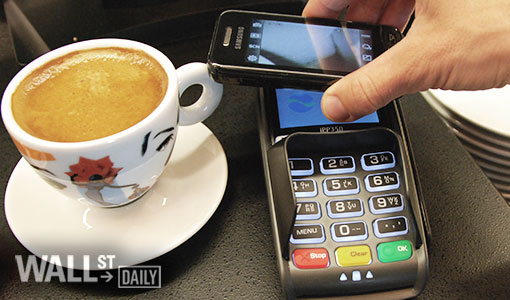
It’s a market worth $210 billion… but like many modern-day conveniences, it’s one that we’re increasingly taking for granted.
I’m talking about mobile payments – the ability to do all your banking and buying directly from a mobile device.
And the critical technology that underpins this market – near-field communication (NFC) – might be finally approaching a tipping point.
The reason?
Well, many people might understandably point to Apple Inc.’s (AAPL) mobile payment solution, Apple Pay, which is powered by NFC technology. It’s gaining traction pretty quickly.
But the truth is, only 20% of iPhone users with Apple Pay actually use it, according to Trustev.
Instead, we can attribute the imminent boom to an unlikely turn of events involving the current payment technology that mobile wallets aim to replace.
A Solution No Longer Searching for a Problem
NFC technology has been around for over a decade, which seems like forever in the tech world.
Heck, we’ve been actively covering it since 2011, anxiously awaiting a breakout.
But before we share why it’s finally upon us, here’s a quick refresher on the technology in case you’re unfamiliar with it.
As the name suggests, NFC technology involves establishing radio communication between two devices in close proximity (approximately five centimeters) in order to exchange vital information.
In mobile payment applications, the devices are traditionally a smartphone and a point-of-sale (POS) terminal at the register.
Recently, wearables, including the Apple Watch, are being equipped with these capabilities, too.
Once a consumer stores their credit card information on their device, all they have to do is wave it close to an NFC-enabled terminal to pay. Or tap and go.
It doesn’t get much more convenient than that, right? So what’s been holding back large-scale adoption of the technology?
Sadly, the status quo…
But What’s Wrong With My Card?
That status quo is something we’re all familiar with – swiping our bank cards on payment machines.












Leave A Comment